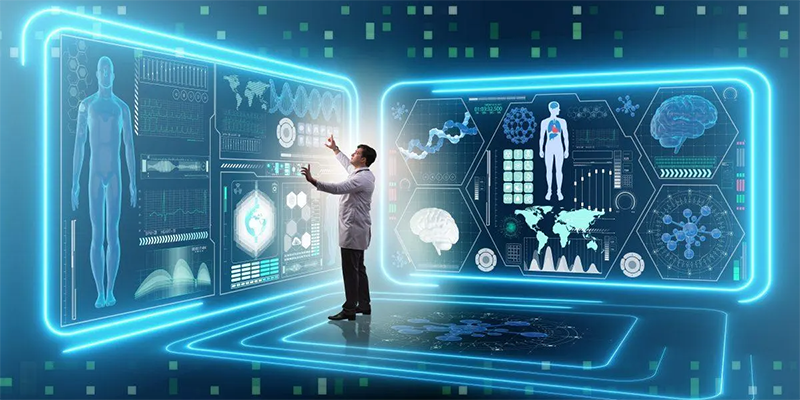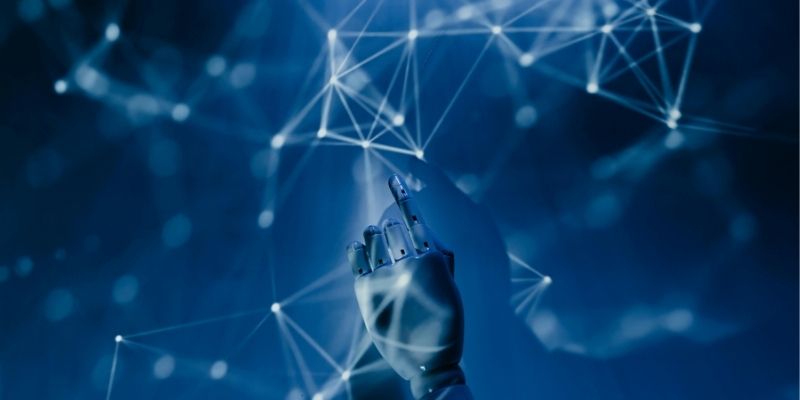
Generative AI vs Predictive AI: Know the differences
Suppose you're working on a project requiring distinctive ideas or practical forecasts to assist judgment. In this very instance, will the offer of Generative AI and Predictive AI come in handy? These two forms of intelligent technology do different things. Whereas Generative AI creates new and original content, Predictive AI forecasts probable trends and results. It may help to understand the distinguishing characteristics between the two to decide which works best for you.
Suppose you're working on a project requiring distinctive ideas or practical forecasts to assist judgment. In this very instance, will the offer of Generative AI and Predictive AI come in handy? These two forms of intelligent technology do different things. Whereas Generative AI creates new and original content, Predictive AI forecasts probable trends and results. It may help to understand the distinguishing characteristics between the two to decide which works best for you.
What Is Generative AI?
Generative AI functions like a digital artist, creating original content such as images, text, audio, and videos based on user prompts. Using machine learning models, it identifies patterns in vast datasets to generate creative outputs.
Some shining illustrations are text generation through ChatGPT, art and image creations through DALL·E, code-writing assistants through GitHub Copilot, and music composition through Amper Music, marking a new era in creative businesses.

Advantages Of Generative AI:
In this era of generative AI, where applications like ChatGPT, D.A.L.L.E., and Github Copilot generate text-, image-, and even music-based entertainment, machine learning is the defining act of identifying patterns in broader data sets.
Generative AI's Challenges:
Generative AI relies heavily on pre-existing data, which may be outdated or biased. It also raises ethical concerns, like academic misuse for plagiarism, and poses security risks, as shared personal data could lead to privacy breaches.
What Is Predictive AI?
Predictive AI is the sophisticated science of forecasting, using big data and algorithm-based models to predict trends, behaviours, and events. In contrast to Generative AI, which is concerned only with the creative aspect of reproduction, Predictive AI covers the whole realm of data analysis to provide an individual with insight and understanding to make an informed decision.
Applications Of Predictive AI:
This optimizes business operations using inventory management, customer behaviour analysis, and marketing predictions. In the health sector, it deals with disease detection and personalized treatments, whereas in the financial industry, it enhances fraud detection and investments.
Advantages Of Predictive AI:
For this reason, Predictive AI is likely to cause increased productivity because it automates repetitive and data-hungry tasks, freeing up employees for strategic decisions. It anticipates customer needs, personalizes experiences, and supports education by identifying learning gaps. However, it has drawbacks, including uncertainty in predictions and a dependency on accurate data, which can lead to faulty conclusions if data is insufficient.
Generative AI Vs Predictive AI: Key Differences
Generative and Predictive AI are crucial in driving innovation and efficiency across industries. Together, they offer unique solutions that enhance creativity, optimize operations, and shape more ingenious decision-making processes for the future.
This is the difference between generative AI and predictive AI. Generative AI is implied as a creativity-engaged AI that generates original outputs, including texts, images, or sounds. Predictive AI entails analyzing and predicting trends to improve the decision-making process for individuals and organizations.

Generative AI should be your weapon of choice for marketing campaigns and blog posts. Predictive AI is the type you want if you had in mind finding out what future customers would appreciate or predicting trends in sales. Understanding these differences can help you choose what kind of AI you need in your context.
The next difference is in the use of data. While Generative AI considers patterns to formulate something entirely new, Predictive AI uses statistical models and algorithms to predict the future. Scope-wise, they are both broad but generally fit different applications and their results.
Choosing The Right AI For Your Needs
Predictive AI increases productivity by relieving employees from tedious data-heavy processing and freeing them to concentrate on more strategic decisions. It predicts behaviour from clients, thus enabling businesses to offer more personalized experiences and improve satisfaction. Education also helps identify student learning gaps, indicating timely intervention. But all is not rosy. Predictive AI is probabilistic, so its predictions may be less than 100% sure. Further, it depends on high-quality data and is prone to creating wrong deductions due to input of incorrect or less data, leading to faulty conclusions affecting decision-making processes.
AI In Career Opportunities:
The impact of AI-gen technologies has brought a significant wave to job offers—bridges such as data science, software engineering, and even AI model development are open to prosperity. AI engineers are given fairly attractive packages, averaging about $127,000 annually. Besides, many predictions mark considerable growth in demand available for AI-related careers within the next few years because of the rising promulgation and use of generative AI examples and predictive AI.

Using AI To Create A Smarter Future
This is how AI instruments are creating a new trend in workplaces with demand in the future for Generative AI and Predictive AI skills. Unique development in Generative AI models or originality in Predictive AI algorithms creates excellent opportunities for revolutions in industrial processes and innovations. Thus, with the help of intelligent solutions being derived through the combination of these technologies, businesses will be getting mature and future-ready solutions that will pave the way for growth and redefine their processes. This convergence of technologies promises a transformative future with endless possibilities for innovation and progress.





